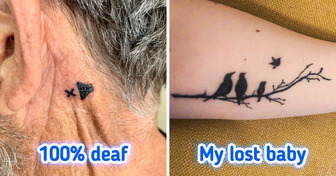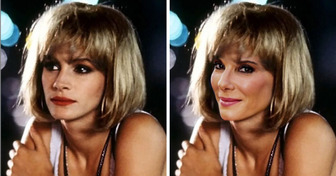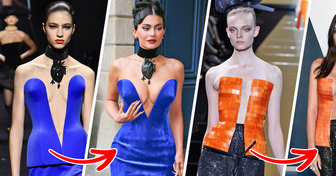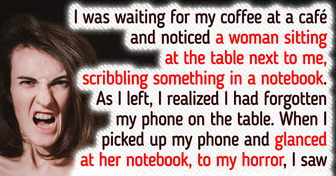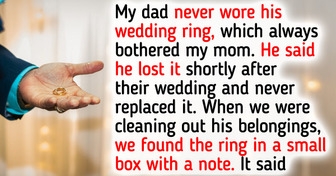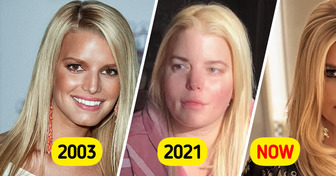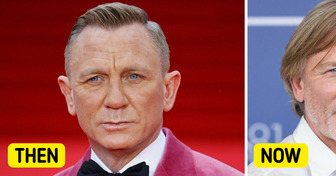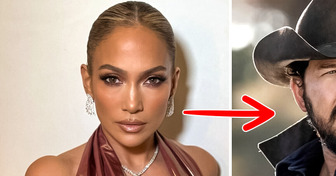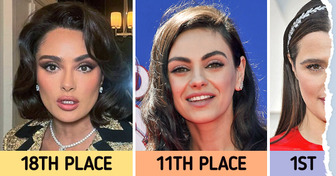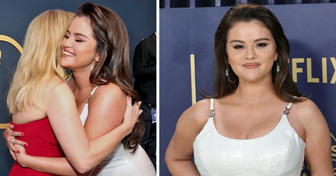16 Powerful Photo Comparisons Where the Difference is Visible From a Mile Away

Two problems with movies and TV series are the existence of troubling double standards and factual inaccuracies regarding historical pieces. Emily Blunt has said, “With so many movies, women are held to what a man considers a feminine ideal. You have to be pretty. You have to be ’likable.” That idea on its own can create a lot of inaccuracies, but it’s only half the story since double standards aren’t only applied to women but also for men.
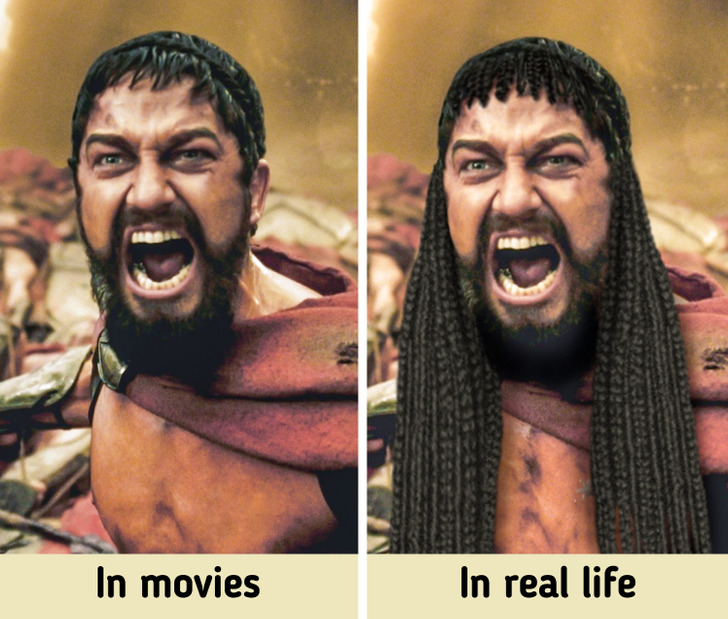
Many people imagine Spartans as unkempt warriors who didn’t bother with how they looked at all. We were quite surprised to learn that Spartan men thoroughly took care of their appearance.
They paid special attention to their hair, which they would braid. Mentions of thick, mid-back length hair can be found in ancient sources. The popularity of this hairstyle is also proven by the images that have been passed down to us.
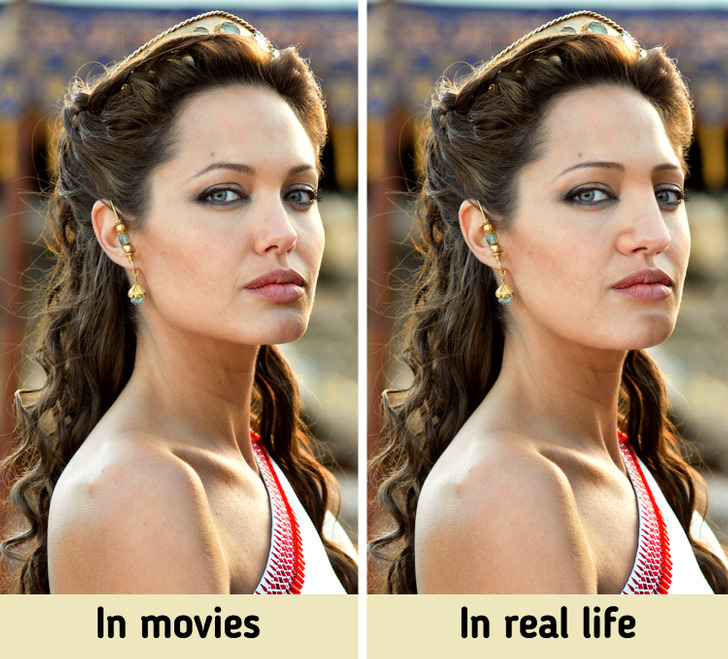
Looking at the charming Angelina Jolie who played the mother of Alexander the Great, Queen Olympias, we start to involuntarily think that all women in the Ancient world had a perfect nose, plump lips, and chiseled cheekbones. However, the truth is that Queen Olympias was quite far from the image created by Hollywood moviemakers. Judging by the only image of Queen Olympias that has survived to our modern-day, she had a classic Greek profile, a low forehead, an upturned chin, and a soft face.
Many legends are devoted to the beauty of Helen of Troy. And it’s not surprising that in movies she is usually played by the most attractive actress at the time. Even though it’s not known for sure what features Helen possessed, it can be confidently said that her beauty corresponded to the beauty canons of those times.
We can assume that Helen of Troy had a low forehead, a large straight nose (without highlighting the bridge of the nose), a slightly upturned chin, and a curvy shape. A History of the Fall of Troy, which has been passed down to us says that the most beautiful of women had fair skin and hair, large eyes, and had a small mole between her eyebrows.
Generally speaking, the life of Roman women during the times of Emperor Augustus was not easy. If a woman belonged to a lower social stratum, she was less constrained in her movements than a woman from the elite part of society. However, they had to work more as well, like helping at farms, for example.
If a woman lived in town, she could become a midwife, a wet nurse, a hairdresser, a seamstress, an actress, a waitress, a cook, or she could entertain the Romans as a juggler or dancer. Women from the upper classes were in charge of housekeeping.
In movies, Ancient Greek beauties are seen with their hair down nicely fluttering in the wind, accurately plucked brows, and gorgeous Mediterranean tan. But in reality, things were slightly different. Naturally connected eyebrows, fair skin, and long hair, which married Greek women gathered in a bun, were considered beautiful in Ancient Greece.
In order to get closer to the ideal, women tried to whiten their skin, color their brows with soot, and attach false eyebrows made of dyed goat hair to their foreheads.
Wealthy Roman women did not breastfeed their kids. Newborns were handed over to their wet- nurses. Soranus, a powerful doctor of those times, figured that a mother was too exhausted after childbirth to breastfeed a kid.
Also, this Roman doctor believed that one of the advantages of getting a Greek wet nurse is that she could transfer the gift of her native language to the baby together with her milk.
For the most part during the history of Ancient Rome, women did not have their own names. They were named according to the clan they belonged to (Cornelia came from the gens, Cornelia). If a family had several daughters, a cognomen, such as Tertia (third), could indicate birth order. Also, newborn girls were named according to their father’s name (Vipsania, the daughter of Vipsanius).
Later, a girl was given 2 names by combining the surname of her father and the name of the place where she was born. In late antiquity, girls were often named after their mothers or other female relatives, who, in turn, were often named after saints.
In movies and TV shows, men that stalk the women they like are scary. And there’s a reason why: they don’t know when to stop and end up making huge mistakes, like, for example, the main character of You.
But if a girl starts stalking a guy, it’s funny. For example, Helga from Hey Arnold! made an altar for the boy she liked. And Elle Woods from Legally Blonde stalked her ex and even entered the same university as him to win him back.
If there’s a businesswoman in a film, she’s most likely very unpleasant. She intimidates and even humiliates her employees. Nobody feels happy for her success because they are terrified of her. For example, remember Miranda Priestly from The Devil Wears Prada?
And powerful men, like Christian Grey in Fifty Shades of Grey, seem even more attractive because of how strong they are.
Women that don’t work and call themselves housewives are ordinary characters, something that we saw in Desperate Housewives. They are not mocked, unlike unemployed men. And men themselves often don’t like their own position, which leads to conflict. In The Intern, the husband of the main character decided to take care of their daughter, so the wife would be able to run her business.
And their relationship got worse as a result. Another example of this double standard could be seen on the hit sitcom, Friends, when Chandler lost his job. He complained that he didn’t know what to do, so his wife, Monica, had to help him find a job.
In movies and series, we often see beautiful women dating less attractive men. And it’s not just our opinion, it’s what the scriptwriters are trying to convey. For example, Charlotte in Sex and the City wasn’t really interested in Harry because of his appearance, but she fell in love with him later on.
And “ordinary” women don’t typically charm handsome guys. A rare exception is the lead character in Bridget Jones’s Diary. Despite her insecurities, she was able to date 2 really handsome men.
In movies, we frequently see parents that don’t pay enough attention to their kids. But bad fathers are often seen in comedic pieces, while bad mothers are mostly depicted in dramas. A comedy where a father keeps letting down his kid is the theme in Liar Liar. In the film, Jim Carrey’s character managed to miss his son’s birthday, but was able to change eventually.
But even when a mother who did something wrong is a character of a comedy and fixes everything in the end, viewers don’t always forgive her. Kate McCallister from Home Alone is still considered to be one of the worst mothers in movie history. Many people just ignore the fact that it was not just her, but also her husband that forgot about Kevin.
Most characters that play video games are guys. Female gamers are seen in movies and series not as often, and mostly in a comedic way.
For example, it turns out that a girl can play even better than a guy. Penny from The Big Bang Theory was very talented at games, and Sheldon couldn’t believe it. And several episodes later, she developed an addiction to gaming.
Female villains don’t get to redeem themselves as often as male ones do. Female antagonists are either too violent, or they don’t get enough attention and a chance to become better. This is what happened to Hela in Thor: Ragnarok. She appeared in just one film of the franchise and never got a second chance.
The conflict between Thor and Loki lasted for several movies, and Thor always forgave his brother. Kylo Ren from Star Wars was able to make amends. Some people agree that he did unforgivable things, but they found excuses for him because he was a pawn in the hands of the Sith.
Do you ever pay attention to double standards and other factual misconceptions that are portrayed on the big and small screens? Have you noticed anything lately that made you shake your head?


